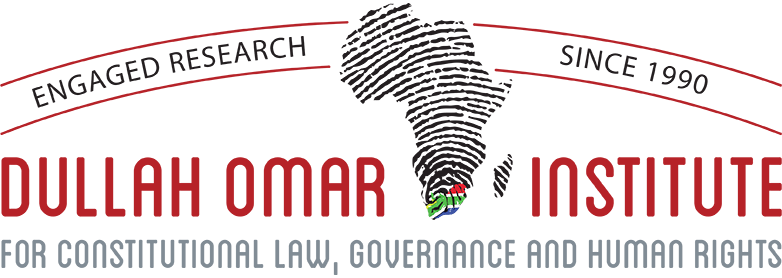Land use management: Where traditional and municipal governance meet in rural areas
As such, when the idea of establishing a wall-to-wall system of local government throughout the country was debated in the early 1990s, it is not surprising that traditional leaders vehemently opposed it. For the institution of traditional leadership, the main aim was to remain the sole local government structure in the rural areas responsible for, among other things, the provision of services and advancing development in the new democratic dispensation. When the system of local government was entrenched in the 1996 Constitution and given the mandate, in 2000, to deliver major public services and drive development throughout South Africa, tensions and contestations between municipalities and traditional leaders began to emerge.
In part, the tensions arose due to local government being responsible for providing the major public services noted above including in areas where traditional leaders governed. That tension has endured since 1994. It has however, been carefully managed by the African National Congress (ANC) led government. But, now it seems that the enactment of the Spatial Planning and Land Use Management Act 16 of 2013 (SPLUMA) might have inadvertently aggravated these tensions.
The Spatial Planning and Land Use Management Act 16 of 2013
SPLUMA was passed in 2013 on the back of a Constitutional Court judgment that declared the Development Facilitation Act unconstitutional. The Court gave the national government until June 2012 to resolve the issues it had raised in its judgment which included making reforms to the planning laws of South Africa, as well as shifting authority to take land use management decisions to local government. The Act confirms municipalities as the appropriate authority to take decisions on matters concerning land use planning and land use management either through an Authorised Official or a Municipal Planning Tribunal. It does so by giving effect and meaning to the functional area of ‘municipal planning’, a function which the Constitution allocates to local government in Part B of Schedule 4.
The Act applies to the entire Republic, including rural areas under the authority of traditional leaders. In fact, the Act establishes a wall-to-wall system of land use management in South Africa. Most importantly, the Act requires each municipality to adopt and approve a single land use scheme before June 2021. In addition, that scheme must include provisions that permit the incremental introduction of land use management and regulation in areas under traditional leadership.
Finally, SPLUMA requires that spatial development frameworks and land use management systems must be applicable in rural areas under traditional authority. This means that SPLUMA is intended to operate in rural settings in the same way it applies in an urban area under the authority of a municipality.
Traditional leaders allocate land to residents or prospective residents in rural areas. Attached to every piece of land is a bundle of land use rights, namely, the right to build a homestead and erect a kraal for the safekeeping of livestock, to name a few. However, under SPLUMA municipalities are empowered and recognised as the appropriate authority to take land use management decisions. Such decisions include granting land use rights in terms of a land use scheme which the municipality has adopted. This means that the rights to build a homestead and erect a kraal for the livestock on a piece of land that has been allocated by a traditional leader can also be granted by the municipality. Whether the process of allocating land in rural areas can be separated from the process of granting land use rights is possible or not is unclear at this stage. But, in practice traditional leaders fear that this could eventually lead to them being alienated or even removed from the process of allocating and managing land use. In response, traditional leaders have, thus, vowed to resist the implementation of SPLUMA in the areas they govern.
The ‘burning’ or emerging issue in the allocation of land
The reality is that in rural areas there still exists a land use and land allocation system which is administered by traditional leaders in terms of customary law and this has been the case for many centuries. This has led to the emergence of two systems of land use management existing parallel to each other. The existence of the two systems in the same area potentially serves as a recipe for conflicts and contestations unless there is agreement and co-operation on how both systems must operate.
Generally, if a person wants to be allocated a piece of land, he or she must first approach the headman of that area who will assist by first calling a community meeting. In that meeting, the public will be made aware of the request for a piece of land, they will then be given an opportunity to make submissions on whether they agree with that allocation of land or not. If the community agrees then the applicant will be required to pay a certain fee either to the headman or the chief for that allocation. After that, a permission to occupy (PTO) certificate will be issued to the applicant.
The land allocation system is very important to the institution of traditional leaders. It is a source of livelihood for many traditional leaders in rural areas. The fees they receive from allocating land contributes a great deal in supporting their families and, arguably, their communities at large. The system of land allocation also represents a system of traditional governance. Traditional leaders have been entrusted by many communities with the responsibility to allocate land and resolve disputes pertaining to land related issues in the community. For traditional leaders this system also represents control. Since land is a critical resource that is essential for the wellbeing and survival of many rural communities, it is often said that the person (mainly chiefs) who administers the land allocation system has control not only over the land but over the people who reside on that land. Hence, the system of land allocation is a very powerful tool for traditional leaders insofar as it supports them financially, but also allows them to maintain their governance role in rural areas.
Comment
The tensions and contestations between traditional leaders and local government predate the enactment of SPLUMA. However, there is a sense that SPLUMA might have aggravated these tensions. It is clear that many traditional leaders believe that SPLUMA seeks to strip them of their power to allocate land. However, the drafters of SPLUMA knew that there was a customary system of land allocation which applies in rural areas. In an attempt to quell any tensions which might arise as a result of SPLUMA empowering municipalities to manage land use in areas under traditional authority, the drafters of SPLUMA included some provisions in the regulations of SPLUMA to help mitigate this problem.
The regulations provide that traditional leaders have the choice of continuing to allocate land in the areas they govern. After an allocation is done, all that is required from a traditional leader is to furnish the municipality with proof of that allocation. Alternatively, traditional leaders can enter into a service level agreement with municipalities which would allow both parties to work together in the form of a partnership. The intention of these provisions is clear. First, they recognise the customary system of land allocation applicable in rural areas. Secondly, through their implementation they seek to diffuse or manage any tensions or contestations which may arise as a result of traditional leaders not being happy that they cannot serve in formal structures such as the Municipal Planning Tribunal which SPLUMA has introduced. Thirdly, the provisions seek to facilitate a collaborative relationship between traditional leaders and municipalities in rural areas. These are some of the mechanisms SPLUMA offers to resolve the tensions between traditional leaders and municipalities.
While the mechanisms exist in SPLUMA, it seems traditional leaders have not been interested in exploring them or municipalities have not suggested them to traditional leaders as a way of addressing the resistance of implementing SPLUMA in areas governed by traditional leaders. In fact, in Kwa-Zulu Natal, some municipalities including eThekwini Metropolitan Municipality have been guilty of aiding the non-implementation of SPLUMA in areas governed by traditional leaders, particularly, areas under the Ingonyama Trust. In a somewhat bizarre move, the municipal planning by-law of eThekwini actually states that SPLUMA is not applicable to land under the custodianship of the Ingonyama Trust Board. This is not only a clear violation of the Constitution as it allocates the municipal planning function to municipalities under schedule 4B, it is also a violation of SPLUMA which gives expression and content to the municipal planning function.
Another serious issue which is proving to be challenging for municipalities is the finalisation of their land use schemes. Currently, practice and anecdotal evidence indicates that an array of municipalities in the rural areas are nowhere near finishing the development of their land use schemes. These delays can be attributed in part to the tensions between traditional leaders and municipalities. It is reported that municipal officials are often not allowed to assess and survey those areas where traditional leaders govern for purposes of including them in the municipality’s land use scheme. Consequently, a significant amount of time and effort is lost trying to secure the buy-in and co-operation of traditional leaders to implement SPLUMA in their areas of jurisdiction.
In fact a realistic assessment of the status quo in communal areas suggests that the wall-to-wall system of local government introduced by the Constitution has not yet been fully realised throughout South Africa. There are areas governed by traditional leaders which are ‘no go areas’ for municipalities because of the tussle between municipalities and traditional leaders about which institution is the appropriate governance structure of a given village, community or kingdom. Therefore, it is suggested that a way forward needs to be mapped by all the relevant role players which include national government, local government, traditional leaders and the rural communities. This will allow all stakeholders to ventilate their grievances and challenges when it comes to the issue of implementing SPLUMA.
by Xavia Poswa, Doctoral Researcher





